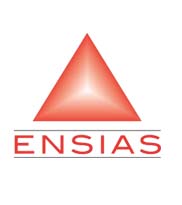- Accueil
-
L'Ecole
-
FORMATIONS
-
FORMATION INGENIEUR
-
Nouvelles filières offertes
- Ingénierie Intélligence Artificielle (2IA)
- Smart Supply Chain & Logistics (2SCL)
- Business Intelligence & Analytics (BI&A)
- Génie de la Data (GD)
- Génie Logiciel (GL)
- Ingénierie Digitale pour la Finance (IDF)
- Smart System Engineering (SSE)
- Data and Software Sciences (D2S)
- Cybersécurité, Cloud et Informatique Mobile (CSCC)
- REGLEMENT DES ETUDES DE L’ENSIAS CYCLE INGENIEUR
-
Nouvelles filières offertes
-
FORMATION INGENIEUR
- FORMATION CONTINUE
-
Recherche
- INTERNATIONAL
- ENTREPRISES
- VIE ESTUDIANTINE
- BIBLIOTHEQUE
LES DERNIÈRES INFORMATIONS
Edge Computing Technology Enablers: A Systematic Lecture Study
| Titre | Edge Computing Technology Enablers: A Systematic Lecture Study |
| Publication Type | Journal Article |
| Year of Publication | 2022 |
| Authors | Douch, S, Abid, MR, Zine-Dine, K, Bouzidi, D, Benhaddou, D |
| Journal | IEEE Access |
| Volume | 10 |
| Pagination | 69264-69302 |
| Mots-clés | 5g, 5g mobile communication, 5G mobile communication systems, Cloud-computing, computation offloading, Containerization, Containers, Data handling, Edge computing, Edge intelligence, Fog computing, Information management, Internet of things, License, Military applications, Mobile communications, Multi-access edge computing, Multiaccess, Quality of service, Quality-of-service, Surveys |
| Abstract | With the increasing stringent QoS constraints (e.g., latency, bandwidth, jitter) imposed by novel applications (e.g., e-Health, autonomous vehicles, smart cities, etc.), as well as the rapidly increasing number of connected IoT (Internet of Things) devices, the core network is becoming increasingly congested. To cope with those constraints, Edge Computing (EC) is emerging as an innovative computing paradigm that leverages Cloud computing and brings it closer to the customer. 'EC' refers to transferring computing power and intelligence from the central Cloud to the network's Edge. With that, EC promotes the idea of processing and caching data at the Edge, thus reducing network congestion and latency. This paper presents a detailed, thorough, and well-structured assessment of Edge Computing and its enabling technologies. Initially, we start by defining EC from the ground up, outlining its architectures and evolution from Cloudlets to Multi-Access Edge Computing. Next, we survey recent studies on the main cornerstones of an EC system, including resource management, computation offloading, data management, network management, etc. Besides, we emphasized EC technology enablers, starting with Edge Intelligence, the branch of Artificial Intelligence (AI) that integrates AI models at resource-constrained edge nodes with significant heterogeneity and mobility. Then, moving on to 5G and its empowering technologies, we explored how EC and 5G complement each other. After that, we studied virtualization and containerization as promising hosting runtime for edge applications. Further to that, we delineated a variety of EC use-case scenarios, e.g., smart cities, e-Health, military applications, etc. Finally, we concluded our survey by highlighting the role of EC integration with future concerns regarding green energy and standardization. © 2013 IEEE. |
| URL | https://www.scopus.com/inward/record.uri?eid=2-s2.0-85132750947&doi=10.1109%2fACCESS.2022.3183634&partnerID=40&md5=88667ef450dd686759983878427de051 |
| DOI | 10.1109/ACCESS.2022.3183634 |
Revues:
LIENS UTILES
Localisation
Contactez-nous
ENSIAS
 Avenue Mohammed Ben Abdallah Regragui, Madinat Al Irfane, BP 713, Agdal Rabat, Maroc
Avenue Mohammed Ben Abdallah Regragui, Madinat Al Irfane, BP 713, Agdal Rabat, Maroc
![]() Télécopie : (+212) 5 37 68 60 78
Télécopie : (+212) 5 37 68 60 78
![]() Secrétariat de direction : 06 61 48 10 97
Secrétariat de direction : 06 61 48 10 97
Secrétariat général : 06 61 34 09 27
Service des affaires financières : 06 61 44 76 79
Service des affaires estudiantines : 06 62 77 10 17 / n.mhirich@um5s.net.ma
CEDOC ST2I : 06 66 39 75 16
Résidences : 06 61 82 89 77
- Compteur de visiteurs:634,759
Education - This is a contributing Drupal Theme
Design by WeebPal.
Design by WeebPal.



































